Les Maîtres Fleur de Mer Rosé Côtes de Provence 75 cl. Origin.
Producer.
Les Maîtres (Les Maîtres Vignerons de St. Tropez).
Name.
Les Maîtres Fleur de Mer Rosé.
Variety.
Country of origin.
Region of origin.
Appellation of origin.
(UE)401/2010 Certification.
Appellation d'Origine Contrôlée (A.O.C.)
A.O.C. Côtes de Provence.
Production region.
The production region of A.O.C. Côtes de Provence is located in La región de Provence.
Weight.
1.500 gr. (1,5 Kg.).
EAN.
3245020000075
Producer |
|
Name |
Les Maîtres Fleur de Mer Rosé. |
Variety |
|
Country of origin |
|
Region of origin |
|
Appellation of origin |
|
(UE)401/2010 Certification |
Appellation d'Origine Contrôlée (A.O.C.) |
Production region |
The production region of A.O.C. Côtes de Provence is located in La región de Provence. |
Weight |
1.500 gr. (1,5 Kg.). |
EAN |
3245020000075 |
Les Maîtres Fleur de Mer Rosé Côtes de Provence 75 cl. Data sheet.
Typology.
Rosé wine.
A.O.C. Côtes de Provence.
Variety.
Vintage / Harvest.
Format.
Bottle.
Capacity.
75 cl.
Alcohol content.
13.5% Vol.
Weight.
1.500 gr. (1,5 Kg.).
Visual tasting note.
Purple reflections, Very clear, Delicate.
Olfactory tasting note.
Cherries, Rose petals, Suitable intensity, Flower scents.
Tasting note.
Hints of vanilla, Slight astringency, Noticeable acidity, Some astringency.
Recommended pairing.
Birds, Fresh cheeses, Smoked Salad.
Consumption temperature.
8ºC.
Consumption.
It is recommended to drink in moderation and demonstrate a responsible consumption of alcoholic beverages.
Typology |
|
Variety |
|
Vintage / Harvest |
Currently marketed by the producer. |
Format |
Bottle. |
Capacity |
75 cl. |
Alcohol content |
13.5% Vol. |
Weight |
1.500 gr. (1,5 Kg.). |
Visual tasting note |
Purple reflections, Very clear, Delicate. |
Olfactory tasting note |
Cherries, Rose petals, Suitable intensity, Flower scents. |
Tasting note |
Hints of vanilla, Slight astringency, Noticeable acidity, Some astringency. |
Recommended pairing |
Birds, Fresh cheeses, Smoked Salad. |
Consumption temperature |
8ºC. |
Consumption |
It is recommended to drink in moderation and demonstrate a responsible consumption of alcoholic beverages. |
Les Maîtres Fleur de Mer Rosé Côtes de Provence 75 cl. Description.
Product reference.
WAN4529116
EAN.
3245020000075
Accessories.
This product is provided in the conditions and format in which it is marketed at the current time. In cases where the product includes an additional packaging, box and/or case, These accessories will be included in the shipment as long as they comply with the dimensions of the special packaging adapted and approved for the transport of beverages.
In general, the images of the products that we publish on our website are only relevant for graphic purposes. The images do not show other accessories such as additional packaging (box, case, etc.) or promotional elements that may occasionally be included by the manufacturer along with the product. If you wish, we can inform you about the additional packaging, elements and accessories included with the product at the current time.
Weight.
1.500 gr. (1,5 Kg.).
Actual price.
12,95 € . This product is currently not available.
Storage position.
Lateral position, horizontal bottle.
Storage temperature.
Store at a constant temperature between 10-17ºC.
Humidity should be constant around 60-80%.
Recommendations.
Keep preferably away from light.
Product reference |
WAN4529116 |
EAN |
3245020000075 |
Accessories |
This product is provided in the conditions and format in which it is marketed at the current time. In cases where the product includes an additional packaging, box and/or case, These accessories will be included in the shipment as long as they comply with the dimensions of the special packaging adapted and approved for the transport of beverages. |
Weight |
1.500 gr. (1,5 Kg.). |
Actual price |
12,95 € . This product is currently not available. |
Storage position |
Lateral position, horizontal bottle. |
Storage temperature |
Store at a constant temperature between 10-17ºC. |
Recommendations |
Keep preferably away from light. |
Les Maîtres Fleur de Mer Rosé Côtes de Provence 75 cl. Legal notice.
Please keep in mind.
The information provided and referred to the product features and details has been provided by the expert, manufacturer or producer or published on the official sites. In no case can it be considered as assessment made by our team, unless expressly stated otherwise.
We suggest you to refer to the comments and reviews posted by our customers and users to expand and contrast this information.
Misreading.
Our team provides this information and details in ESPAÑOL language.
If you browse in another language note that the information contained may have been translated from the original language through an automated real-time process that has not been supervised by our human team.
In case of doubt, misunderstanding or misreading about the content of this information you should refer to the original version of this page or contact our customer service team.
Product image.
The product image or its label is only relevant for graphic purposes, so it may not match the identification of the vintage or other features and details of the product for sale. This product is provided in the conditions and format in which it is marketed at the current time.
This product is not identified or supplied in a specific vintage. The product image and label may not match the vintage identification or other characteristics and details of the product for sale.
Accessories.
This product is provided in the conditions and format in which it is marketed at the current time. In cases where the product includes an additional packaging, box and/or case, These accessories will be included in the shipment as long as they comply with the dimensions of the special packaging adapted and approved for the transport of beverages.
In general, the images of the products that we publish on our website are only relevant for graphic purposes. The images do not show other accessories such as additional packaging (box, case, etc.) or promotional elements that may occasionally be included by the manufacturer along with the product. If you wish, we can inform you about the additional packaging, elements and accessories included with the product at the current time.
Country of origin.
Spain. This product is shipped from Spain.
Legal Notice.
It is against the law to sell or supply alcohol to, or to obtain alcohol on behalf of a person under the age of 18 years.
If you are not more than 18 years old, you must leave this website.
Please keep in mind |
The information provided and referred to the product features and details has been provided by the expert, manufacturer or producer or published on the official sites. In no case can it be considered as assessment made by our team, unless expressly stated otherwise. |
Misreading |
Our team provides this information and details in ESPAÑOL language. |
Product image |
The product image or its label is only relevant for graphic purposes, so it may not match the identification of the vintage or other features and details of the product for sale. This product is provided in the conditions and format in which it is marketed at the current time. |
Accessories |
This product is provided in the conditions and format in which it is marketed at the current time. In cases where the product includes an additional packaging, box and/or case, These accessories will be included in the shipment as long as they comply with the dimensions of the special packaging adapted and approved for the transport of beverages. |
Country of origin |
Spain. This product is shipped from Spain. |
Legal Notice |
It is against the law to sell or supply alcohol to, or to obtain alcohol on behalf of a person under the age of 18 years. |
No customer reviews at this time. Be the first to post a review!
Les Maîtres Fleur de Mer Rosé Côtes de Provence 75 cl.
Additional information.
«Les Maîtres Fleur de Mer Rosé Côtes de Provence» is produced by Les Maîtres (Les Maîtres Vignerons de St. Tropez). In the elaboration of «Les Maîtres Fleur de Mer Rosé Côtes de Provence» the grape varieties that are used are Grenache, Carignan and Cinsault. «Les Maîtres Fleur de Mer Rosé Côtes de Provence» is a product from France. The production region of «Les Maîtres Fleur de Mer Rosé Côtes de Provence» is Provence. It is certified with A.O.C. Côtes de Provence. The production region of A.O.C. Côtes de Provence is located in La región de Provence. The weight of «Les Maîtres Fleur de Mer Rosé Côtes de Provence» is 1.500 grams (1,5 Kg.). «Les Maîtres Fleur de Mer Rosé Côtes de Provence» is identified and marketed with the barcode EAN 3245020000075.
«Les Maîtres Fleur de Mer Rosé Côtes de Provence» belongs to the Rosé wine category, Rosé wine Appellation of origin A.O.C. Côtes de Provence. In the elaboration of «Les Maîtres Fleur de Mer Rosé Côtes de Provence» the grape varieties that are used are Grenache, Carignan and Cinsault. This product is not identified or supplied in a specific vintage. The product image and label may not match the vintage identification or other characteristics and details of the product for sale. If you wish, we can provide you with this information, and, of course, You can request a specific vintage and we will try our best to satisfy you. «Les Maîtres Fleur de Mer Rosé Côtes de Provence» is marketed in bottle 75 cl format. The alcohol content of «Les Maîtres Fleur de Mer Rosé Côtes de Provence» is 13.5% Vol. The weight of «Les Maîtres Fleur de Mer Rosé Côtes de Provence» is 1.500 grams (1,5 Kg.). Regarding the tasting of «Les Maîtres Fleur de Mer Rosé Côtes de Provence», the notes purple reflections, very clear and delicate stand out in its visual phase. Among the predominant notes of the olfactory tasting are cherries, rose petals, suitable intensity and flower scents. Finally, The tasting of «Les Maîtres Fleur de Mer Rosé Côtes de Provence» in the taste phase stands out with hints of vanilla, slight astringency, noticeable acidity and some astringency. It is recommended to pair «Les Maîtres Fleur de Mer Rosé Côtes de Provence» with birds, fresh cheeses and smoked salad. The optimum temperature to consume «Les Maîtres Fleur de Mer Rosé Côtes de Provence» is 8ºC.
«Les Maîtres Fleur de Mer Rosé Côtes de Provence» is identified and marketed with the barcode EAN 3245020000075. The weight of «Les Maîtres Fleur de Mer Rosé Côtes de Provence» is 1.500 grams (1,5 Kg.). The final sale price of «Les Maîtres Fleur de Mer Rosé Côtes de Provence» is 12,95 € in PrivateCeller.com. Temporarily «Les Maîtres Fleur de Mer Rosé Côtes de Provence» is not available for sale on PrivateCeller.com.
The information provided and referred to the product features and details has been provided by the expert, manufacturer or producer or published on the official sites. In no case can it be considered as assessment made by our team, unless expressly stated otherwise. We suggest you to refer to the comments and reviews posted by our customers and users to expand and contrast this information. The product image or its label is only relevant for graphic purposes, so it may not match the identification of the vintage or other features and details of the product for sale. This product is provided in the conditions and format in which it is marketed at the current time. Spain. This product is shipped from Spain.
Variety:
Grenache, Carignan and Cinsault.
Les Maîtres Fleur de Mer Rosé Côtes de Provence 75 cl.
Variety Grenache.
See Grenache Rosé wine list.
 Español [ ES ]
Español [ ES ]Origen.
El origen de la uva garnacha está localizado, según se ha comprobado ampelográficamente, en la región de Aragón, en el noreste de España. Desde allí fueron llevados a otros territorios de la Corona de Aragón, como Cerdeña o el Rosellón, en el sur de Francia. Uno de los primeros nombres que recibió fue "tinto aragonés”. En Cerdeña se conoce como cannonau, donde se afirma que se originó allí y que se extendió a otras tierras del Mediterráneo que estaban bajo el gobierno de Aragón. La garnacha ya estaba bien difundida a ambos lados del Pirineo cuando la región de Rosellón fue anexionada por Francia. A partir de ahí la vid se abrió camino a través de Languedoc y al sur de la región del Ródano, donde quedó bien asentada en el siglo XIX. A pesar de su preponderancia en las cercanas regiones de Navarra y Cataluña, la garnacha no fue plantada ampliamente en La Rioja hasta principios del siglo XX, cuando se replantaron los viñedos después de la epidemia de filoxera. Australia comenzó a plantar cepas de garnacha en el siglo XVIII, convirtiéndose en la variedad de uva de vino tinto más plantada del país hasta que fue superada por la syrah a mediados de los años sesenta. En el siglo XIX, los viticultores de California apreciaron la capacidad de la vid para producir altos rendimientos y soportar el calor y la sequía.
Características.
La variedad garnacha crece en cepas muy vigorosas de porte erguido, con elevada fertilidad y muy productivas. Los racimos son entre medianos y grandes, muy compactos y de bayas bastante uniformes, con pedúnculo corto. Las bayas son medianas de tamaño, esféricas, con epidermis de color rojo violeta oscuro, de difícil desprendimiento de su pedicelo. Su hollejo es fino, muy sensible a roces y con mucha pruina. La consistencia de su pulpa es blanda, muy jugosa, sin pigmentación. La garnacha tinta es una variedad muy sensible al mildiu tanto en hojas como en racimos, al black rot, a la excoriosis y a la yesca. Resiste muy bien al oídio, pero no al oídio tardío. Es muy sensible a distintos tipos de corrimientos ya sean fisiológicos, por frio, o inducidos por determinados patrones como Rupestris de Lot. Se ve bastante afectada por la polilla del racimo y los cicadélidos. Sensible a la necrosis bacteriana y a los virus del amarillo y bandeado de nervios, así como al desecado del raquis y por ello con altos requerimiento en magnesio. Su sensibilidad a la botritis y a la podredumbre ácida es media. No tolera bien los suelos muy húmedos o encharcados. Las cepas de garnacha son algo sensibles al corrimiento y poco a la eutipiosis y a los ácaros. Son cepas que resisten muy bien el viento y la sequía, adaptándose a cualquier tipo de suelo. Sus podas han de ser cortas, dando buenas producciones y de calidad al disponerse en espalderas, pero producciones excesivas reducen el color y minimiza su contenido en azúcar y pierde aroma. También es exigente en fósforo y boro. Poco exigente en nitrógeno.
Zonas de cultivo.
La garnacha está muy presente en todo el mundo, destacando Francia y España, aunque desde finales del siglo XX la superficie plantada ha ido decreciendo debido a que se han puesto de moda otras viñas como tempranillo, cabernet Sauvignon y merlot. En España es común en Borja y Cariñena, ambas en Aragón. Se usa en las zonas de Denominación de Origen Calificada de la Rioja y Priorato, además de en las áreas montañosas al suroeste de Madrid, al norte de la provincia de Toledo (D.O. Méntrida) y en Cebreros (Ávila). Otras regiones vitícolas con considerables plantaciones de garnacha incluyen Costers del Segre, L'Empordá-Costa Brava, La Mancha, Madrid, Penedés, Somontano, Tarragona, Terra Alta. Es una variedad recomendada en las comunidades autónomas de Aragón, Castilla-La Mancha, Castilla y León, Cataluña, Extremadura, Madrid, País Vasco y Comunidad Valenciana y otras con menor presencia. Es la uva protagonista de una gran mayoría de los vinos rosados de la D.O. Navarra. También se elaboran vinos de esta variedad, ya sea monovarietal o coupage, en Francia, Italia, Australia y EE.UU y en menor medida, en Mexico, chile, Uruguay, Argentina y Sudáfrica.
Vinos.
La garnacha es una uva que se utiliza, en muchas zonas, para mejorar el color y la graduación alcohólica de vinos de otras variedades. Los Los vinos jóvenes de garnacha tienen aromas de pimienta recién molida pero manteniendo aromas de frambuesa y moras. Al envejecer, con poca crianza en barricas de roble, los vinos mantienen su color potente, adquieren aromas a fruta madura, manzana y toques minerales, sobre todo los procedentes del Priorato. Son vinos de grado alcohólico elevado, afrutados, redondos y amables, con gran intensidad aromática (frutas negras muy maduras, ciruelas secas) y con buena capacidad de crianza.
Rosé wine Grenache
Product Selection Rosé wine Grenache.
Les Maîtres Fleur de Mer Rosé Côtes de Provence 75 cl.
Variety Carignan.
See Carignan Rosé wine list.
 Español [ ES ]
Español [ ES ]Origen.
La variedad cariñena es una uva originaria de la zona de Aragón de donde toma su nombre, concretamente de la comarca homónima ubicada en la provincia de Zaragoza. Aunque hay algunas dudas sobre su relación, también es conocida como mazuelo en la denominación de origen Rioja. En Cataluña recibe el nombre de samsó. Los primeros escritores de libros de vinos de Italia especularon que la cariñena, conocida como carignano en algunas partes de Italia, era una vid fenicia que fue introducida en Cerdeña por los fenicios en el siglo IX a. C. Creían que esa uva se había extendido a otras colonias fenicias partiendo de ahí, llegando al asentamiento de Sulces, donde eventualmente fue traída a la península itálica y, desde ahí, los antiguos romanos la llevaron a las regiones del Mediterráneo Occidental. Hoy, la mayoría de los ampelógrafos ha descartado esta teoría debido a la falta de documentación histórica y evidencias de ADN que sugieran que la uva tiene un origen fenicio o italiano. En lugar de eso, la evidencia apunta de forma más evidente a un origen español de la uva. La uva cariñena es también conocida como mazuela, mazuelo, samsó, caranyana, crinyana, granyena, caragnane o carignan.
Características.
Las cepas de cariñena son vigorosas, de entrenudos cortos y, por ello, con mucha densidad de hojas, de porte erguido, de elevada fertilidad y con muy buenos rendimientos. Su desborre es tardío y madura en media estación tendiendo a tardía, siendo de las últimas variedades de uva que se cosechan en la vendimia, por lo que, salvo que esté plantada en suelos muy cálidos, no suele alcanzar la madurez completa para su vendimia. Los racimos son grandes, compactos, con hombros marcados y pedúnculos muy cortos, uniformes en el tamaño de las uvas, pero heterogéneos en su color. Las uvas son grandes, de epidermis con enverado y evolución del color irregular y color azul negro con mucha pruina. A pesar de tener un hollejo no demasiado grueso, sí tiene una elevada resistencia a heridas y al agrietado. La pulpa no tiene pigmentación, tiene bastante consistencia, aunque es blanda y jugosa. Es una variedad con elevada sensibilidad a la yesca y al oídio, lo que puede causar grandes pérdidas por ataques tardíos a los racimos. Es sensible a la polilla de racimo, aunque no suele tener problemas de ataques, asimismo es bastante sensible a los ácaros. Tiene una sensibilidad media al mildiu y a la botritis y escasa a la excoriosis y a la eutipiosis. No suele tener problemas de corrimiento de racimo, tolera bastante bien las sequías y tampoco sufre daños con el viento. No requiere de niveles altos de fósforo, nitrógeno ni magnesio, no así de potasio, ya que una carencia en este elemento provocaría oscurecimiento de la pulpa. Es una cepa que se adapta bastante bien a cualquier tipo de suelo, aunque los mejores resultados se obtienen con suelos pedregosos, ya sean aluviales o esquistosos, pero en ningún caso encharcados o saturados de humedad. Se recomiendan las podas cortas y no efectuar despuntes.
Zonas de cultivo.
Como su nombre indica, la uva cariñena es la más característica de los vinos de su DO homónima, Cariñena. También se elaboran vinos con esta variedad, aunque sea conocida como mazuelo, en la D.O.C. Rioja. Otras zonas productoras que producen caldos con esta uva son las D.O. de Priorato, Mointsant o Tarragona. Fuera de España también es una uva muy cultivada, se pueden encontrar viñedos de cariñena en países muy variados, como es el caso de Francia, Chile, México, Sudáfrica o Estados Unidos e incluso en China.
Vinos.
La variedad cariñena da lugar a mostos con alto contenido en azúcar y bastante color, con elevado contenido en taninos astringentes y con aromas amargos y herbáceos dando vinos jóvenes de color muy vivo con aromas florales, predominando las violetas, pero que poseen poca estabilidad aromática en su evolución. Por su alto contenido en azúcar es base de vinos alcohólicos, bien cubiertos de capa y con buenos aromas en vinos jóvenes, así como con una acidez elevada. Los vinos procedentes de cepas viejas pueden ser excelentes, con un alto nivel de taninos por lo que envejece bien y da vinos con cuerpo.
Rosé wine Carignan
Product Selection Rosé wine Carignan.
Les Maîtres Fleur de Mer Rosé Côtes de Provence 75 cl.
Variety Cinsault.
See Cinsault Rosé wine list.
 Español [ ES ]
Español [ ES ]Origen.
La cinsaut o cinsault es una uva tinta importante en la región francesa de Languedoc-Rosellón y en las antiguas colonias francesas de Argelia y Marruecos. Se mezcla a menudo con uvas como la garnacha y la cariñena para añadirle a los vinos suavidad y buqué. Tiene algunos sinónimos, de los cuales el más se presta a la confusión es el de oeillade, aunque es diferente de la oeillade original, que ya no se cultiva. En Sudáfrica era conocida como hermitage, de ahí que el cruce con cinsault y pinot noir se conoce como pinotage, su cruce más famoso. La cinsault parece ser una variedad antigua que puede haberse originado en Hérault, pero podría haber sido traída por comerciantes del Mediterráneo Oriental.
Características.
La vid de variedad cinsault puede producir cosechas abundantes, pero los vinos son mucho mejores si se controlan los rendimientos. La cinsaut es muy resistente a la sequía, pero puede ser susceptible a enfermedades, de modo que aprecia un clima seco. Produce racimos grandes y cilíndricos de uvas oscuras con pieles gruesas.
Cultivo.
La cinsault es la cuarta uva tinta más plantada de Francia, y es especialmente importante en la región de Languedoc-Rosellón. También es usada ampliamente para hacer vinos rosados en la Provenza. En Argelia, debido a su gran resistencia a la sequía se usa para hacer grandes volúmenes de vino así como en Marruecos y Túnez. En Australia crece bajo una gran variedad de nombres, como black prince, blue imperial, oeillade y ulliade. En Chile se le conoce como cinsault o cargadora, dada la abundancia de racimos. En total Chile cuenta con más de 796 hectáreas plantadas de cinsault, de las cuales casi 700 se concentran en el Valle del Itata, en las zonas de Coelemu, Guarilihue y Portezuelo. Actualmente en otras zonas vitivinícolas como el Valle de Colchagua y Villarrica, se han iniciado nuevas plantaciones. En Italia se la conoce como ottavianello. Hay una pequeña Denominazione di Origine Controllata (DOC) dedicada a la cinsaut, la Ottavianello di Ostu, con una producción de menos de 100 cajas al año. En cualquier caso, la cinsault es muy usda en las mezclas de Apulia y también está recabando la atención de los productores interesados en reavivar las variedades más antiguas. La cinsault es un componente importante en el ensamblaje del Château Musar libanés. En Sudáfrica crece mucha cinsaut, buena parte de la cual es mezclada con cabernet sauvignon. El viñedo más antiguo de cinsault puede ser el de Bechtold en Lodi, California, Estados Unidos, que fue plantado en 1885 por Joseph Spenker. Se planta también algo de cinsaut en California donde se le da el nombre de black malvoisie. También hay plantaciones de cinsaut en el valle Yakima del estado de Washington.
Rosé wine Cinsault
Product Selection Rosé wine Cinsault.
Les Maîtres Fleur de Mer Rosé Côtes de Provence 75 cl.
Data sheet.
Les Maîtres Fleur de Mer Rosé Côtes de Provence 75 cl.
Rosé wine. Les Maîtres. Fleur de Mer Rosé. A.O.C. Côtes de Provence. Provence. France. Grenache, Carignan, Cinsault. 75 cl..
Variety.
Country of origin.
Region of origin.
Appellation of origin.
Vintage / Harvest.
Format.
Bottle.
Capacity.
75 cl.
Alcohol content.
13.5% Vol.
Visual tasting note.
Purple reflections, Very clear, Delicate.
Olfactory tasting note.
Cherries, Rose petals, Suitable intensity, Flower scents.
Tasting note.
Hints of vanilla, Slight astringency, Noticeable acidity, Some astringency.
Recommended pairing.
Birds, Fresh cheeses, Smoked Salad.
Consumption temperature.
8ºC.
Typology.
Rosé wine.
A.O.C. Côtes de Provence.
Producer.
Les Maîtres (Les Maîtres Vignerons de St. Tropez).
Name.
Les Maîtres Fleur de Mer Rosé.
Weight.
1.500 gr. (1,5 Kg.).
EAN.
3245020000075
Product reference.
WAN4529116
Actual price.
12,95 € . This product is currently not available.
Please keep in mind.
The information provided and referred to the product features and details has been provided by the expert, manufacturer or producer or published on the official sites. In no case can it be considered as assessment made by our team, unless expressly stated otherwise.
We suggest you to refer to the comments and reviews posted by our customers and users to expand and contrast this information.
Misreading.
Our team provides this information and details in ESPAÑOL language.
If you browse in another language note that the information contained may have been translated from the original language through an automated real-time process that has not been supervised by our human team.
In case of doubt, misunderstanding or misreading about the content of this information you should refer to the original version of this page or contact our customer service team.
Product image.
The product image or its label is only relevant for graphic purposes, so it may not match the identification of the vintage or other features and details of the product for sale. This product is provided in the conditions and format in which it is marketed at the current time.
This product is not identified or supplied in a specific vintage. The product image and label may not match the vintage identification or other characteristics and details of the product for sale.
Country of origin.
Spain. This product is shipped from Spain.
(UE)401/2010 Certification.
Appellation d'Origine Contrôlée (A.O.C.)
A.O.C. Côtes de Provence.
Production region.
The production region of A.O.C. Côtes de Provence is located in La región de Provence.
Storage position.
Lateral position, horizontal bottle.
Storage temperature.
Store at a constant temperature between 10-17ºC.
Humidity should be constant around 60-80%.
Recommendations.
Keep preferably away from light.
Accessories.
This product is provided in the conditions and format in which it is marketed at the current time. In cases where the product includes an additional packaging, box and/or case, These accessories will be included in the shipment as long as they comply with the dimensions of the special packaging adapted and approved for the transport of beverages.
In general, the images of the products that we publish on our website are only relevant for graphic purposes. The images do not show other accessories such as additional packaging (box, case, etc.) or promotional elements that may occasionally be included by the manufacturer along with the product. If you wish, we can inform you about the additional packaging, elements and accessories included with the product at the current time.
Legal Notice.
It is against the law to sell or supply alcohol to, or to obtain alcohol on behalf of a person under the age of 18 years.
If you are not more than 18 years old, you must leave this website.
Consumption.
It is recommended to drink in moderation and demonstrate a responsible consumption of alcoholic beverages.
Variety |
|
Country of origin |
|
Region of origin |
|
Appellation of origin |
|
Vintage / Harvest |
Currently marketed by the producer.
|
Format |
Bottle. |
Capacity |
75 cl. |
Alcohol content |
13.5% Vol. |
Visual tasting note |
Purple reflections, Very clear, Delicate. |
Olfactory tasting note |
Cherries, Rose petals, Suitable intensity, Flower scents. |
Tasting note |
Hints of vanilla, Slight astringency, Noticeable acidity, Some astringency. |
Recommended pairing |
Birds, Fresh cheeses, Smoked Salad. |
Consumption temperature |
8ºC. |
Typology |
|
Producer |
|
Name |
Les Maîtres Fleur de Mer Rosé. |
Weight |
1.500 gr. (1,5 Kg.). |
EAN |
3245020000075 |
Product reference |
WAN4529116 |
Actual price |
12,95 € . This product is currently not available. |
Please keep in mind |
The information provided and referred to the product features and details has been provided by the expert, manufacturer or producer or published on the official sites. In no case can it be considered as assessment made by our team, unless expressly stated otherwise. |
Misreading |
Our team provides this information and details in ESPAÑOL language. |
Product image |
The product image or its label is only relevant for graphic purposes, so it may not match the identification of the vintage or other features and details of the product for sale. This product is provided in the conditions and format in which it is marketed at the current time. |
Country of origin |
Spain. This product is shipped from Spain. |
(UE)401/2010 Certification |
Appellation d'Origine Contrôlée (A.O.C.) |
Production region |
The production region of A.O.C. Côtes de Provence is located in La región de Provence. |
Storage position |
Lateral position, horizontal bottle. |
Storage temperature |
Store at a constant temperature between 10-17ºC. |
Recommendations |
Keep preferably away from light. |
Accessories |
This product is provided in the conditions and format in which it is marketed at the current time. In cases where the product includes an additional packaging, box and/or case, These accessories will be included in the shipment as long as they comply with the dimensions of the special packaging adapted and approved for the transport of beverages. |
Legal Notice |
It is against the law to sell or supply alcohol to, or to obtain alcohol on behalf of a person under the age of 18 years. |
Consumption |
It is recommended to drink in moderation and demonstrate a responsible consumption of alcoholic beverages. |

 Red Wines from Spain
Red Wines from Spain Italy
Italy France
France Argentina
Argentina United States
United States Australia
Australia Portugal
Portugal Chile
Chile New Zealand
New Zealand South Africa
South Africa





 Germany
Germany Austria
Austria




 Tokaj-Hegyalja
Tokaj-Hegyalja
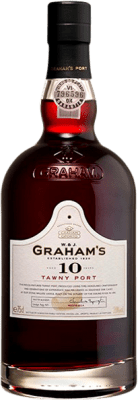








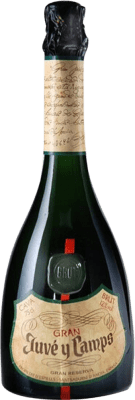
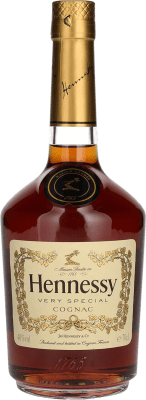


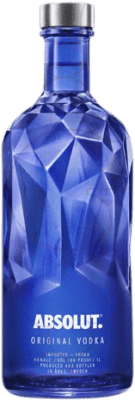


 Français
Français
 Deutsch
Deutsch
 Italiano
Italiano
 Português
Português
 中文
中文
 Русский
Русский
 日本語
日本語
 Belgium
Belgium
 Bulgaria
Bulgaria
 Croatia
Croatia
 Cyprus
Cyprus
 Czech Republic
Czech Republic
 Denmark
Denmark
 Estonia
Estonia
 Finland
Finland
 Greece
Greece
 Ireland
Ireland
 Latvia
Latvia
 Liechtenstein
Liechtenstein
 Lithuania
Lithuania
 Luxembourg
Luxembourg
 Monaco
Monaco
 Netherlands
Netherlands
 Norway
Norway
 Poland
Poland
 Romania
Romania
 San Marino
San Marino
 Slovakia
Slovakia
 Slovenia
Slovenia
 Spain, Balearic Islands
Spain, Balearic Islands
 Spain, Canary Islands
Spain, Canary Islands
 Sweden
Sweden
 Switzerland
Switzerland
 United Kingdom
United Kingdom

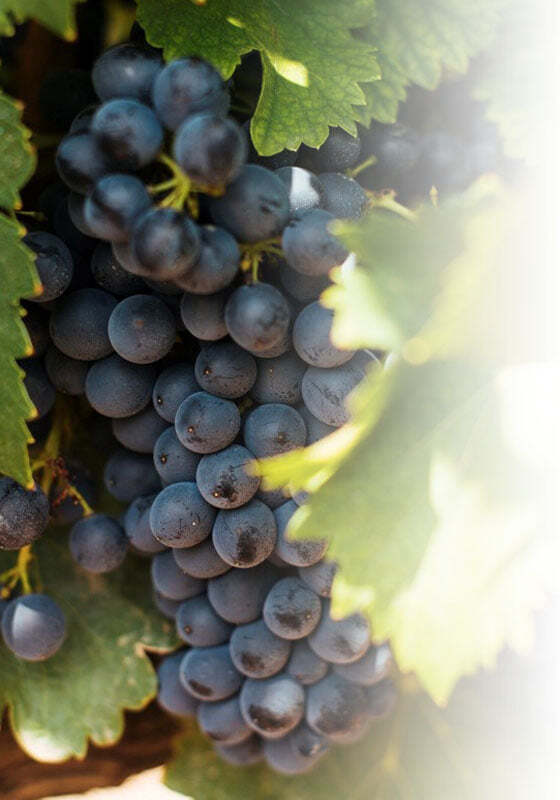
 EUR, Final price!
EUR, Final price!







